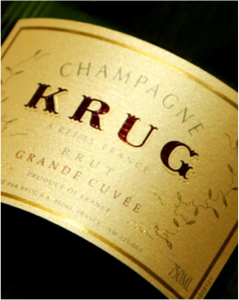 Leaving aside, for the moment, the indisputable fact that tobacco isn’t as popular as it used to be (the reasons for which have no need of being repeated here), the twenty-first century is hardly devoid of connoisseurs eager to set aflame a finely wound Cuban cigar when the right occasion arises. And what could be a better occasion than the upcoming New Year’s Eve, a time when upbeat outdoor and indoor festivities would seem to call for a Cohiba or two? But, would it surprise you to learn that Scotch and brandy are scarcely the only types of alcoholic beverages that have a tendency to pair well with cigars? In fact, believe it or not champagne, among other types of sparkling wines, can serve as an excellent accompaniment to that set of cigars you might have been saving for a special occasion. The reason? Evidently, according to our sources, the inherent flavour profile of tobacco would appear to have a natural affinity for being paired with white wines that sparkle; and the ethereal delicacy of many types of champagne lend themselves incredibly well to only enhancing the enjoyment of as fine a premium Cuban cigar as a Cohiba – La Línea, Clásica, Maduro, or otherwise. More importantly, like all other premium products, there are certain recommended guidelines to follow when deciding on what specific champagne is best paired with what specific type of cigar. As a general rule, it would stand to reason that lighter-styled champagnes, or ones with a greater focus on finesse and style than richness and intensity, ought to be paired with cigars of a more delicate and elegant disposition, perhaps even a cigar of smaller size. Alternatively, for more powerful types of champagne (from top cuvées to the most prestigious vintages) your best bet would be probably to seek out cigars with greater assertiveness and longevity, not to mention ones boasting a larger dimension. And if you have a few champagne and cigar-loving friends to share these with, so much the better. After all, what is the celebration of a New Year without a little company?
Leaving aside, for the moment, the indisputable fact that tobacco isn’t as popular as it used to be (the reasons for which have no need of being repeated here), the twenty-first century is hardly devoid of connoisseurs eager to set aflame a finely wound Cuban cigar when the right occasion arises. And what could be a better occasion than the upcoming New Year’s Eve, a time when upbeat outdoor and indoor festivities would seem to call for a Cohiba or two? But, would it surprise you to learn that Scotch and brandy are scarcely the only types of alcoholic beverages that have a tendency to pair well with cigars? In fact, believe it or not champagne, among other types of sparkling wines, can serve as an excellent accompaniment to that set of cigars you might have been saving for a special occasion. The reason? Evidently, according to our sources, the inherent flavour profile of tobacco would appear to have a natural affinity for being paired with white wines that sparkle; and the ethereal delicacy of many types of champagne lend themselves incredibly well to only enhancing the enjoyment of as fine a premium Cuban cigar as a Cohiba – La Línea, Clásica, Maduro, or otherwise. More importantly, like all other premium products, there are certain recommended guidelines to follow when deciding on what specific champagne is best paired with what specific type of cigar. As a general rule, it would stand to reason that lighter-styled champagnes, or ones with a greater focus on finesse and style than richness and intensity, ought to be paired with cigars of a more delicate and elegant disposition, perhaps even a cigar of smaller size. Alternatively, for more powerful types of champagne (from top cuvées to the most prestigious vintages) your best bet would be probably to seek out cigars with greater assertiveness and longevity, not to mention ones boasting a larger dimension. And if you have a few champagne and cigar-loving friends to share these with, so much the better. After all, what is the celebration of a New Year without a little company?
By: Liz Palmer and Julian Hitner

